What is a Boom Lift, and how has it shaped our current way of living?
Boom Lifts are called many things. Whether you refer to them by their definition: “Aerial Work Platforms (AWP);” historical function: “Cherry Pickers;” general appearance: “Bucket Truck;” contemporary function: “Mobile Elevating Work Platform (MEWP);” or by its affectionate nickname: “The Giraffe,” this machine, in its most crude form, have shaped the modern age through its contribution since the early days of civilization. The basic premise of moving just about anything, from resources to materials, to livestock, and even people, has been essential. It merely began as a tool to add vertical mobility to horizontal and eventually became extremely versatile.
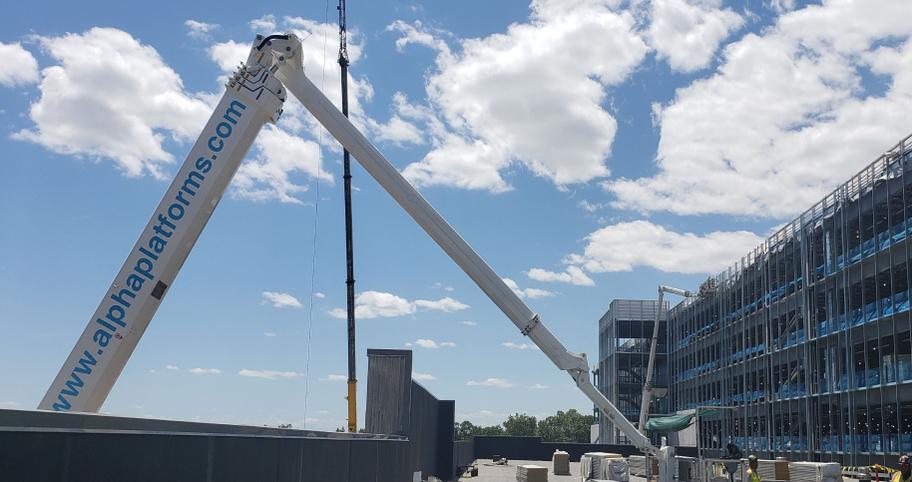
What were the beginnings of the Boom Lift?
To understand the Boom Lift, we need to know its two basic components. First, is the “Boom,” an expandable stand or crane to elevate cargo. Second is the “Lift,” a “platform” or “vessel,” much like a basket where materials and people can be loaded.
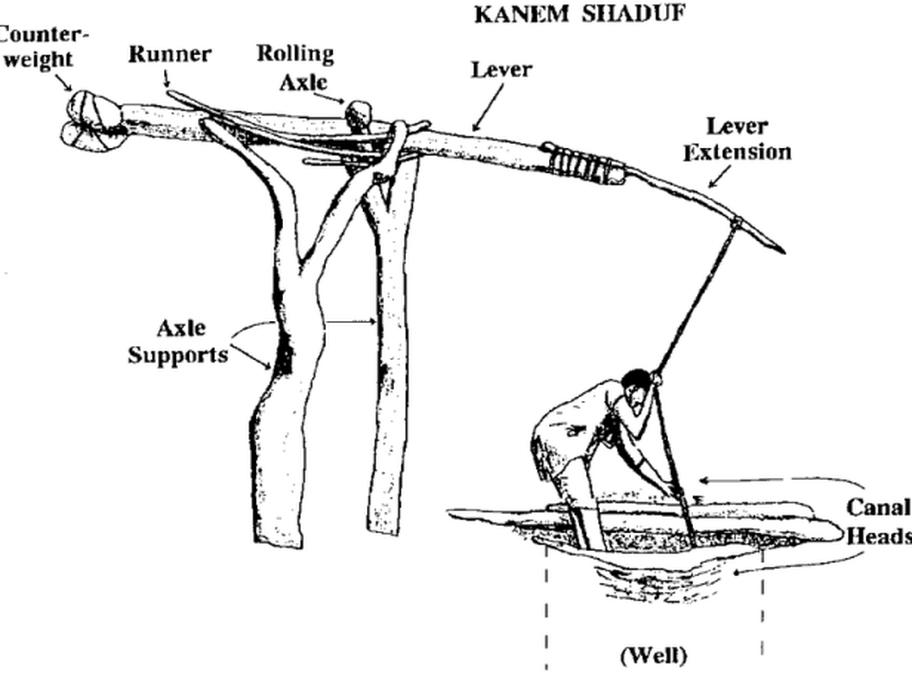
What is a Boom, and why is it important?
Let’s first briefly explore the fascinating origins of the “Boom” also known as a Crane. The early beginnings of vertical transport can be seen circa 3,000 BC in ancient Mesopotamia, where a simple machine known as a “Shaduf” (pictured above) was used as a lever to extract water from a well. The vertical lifting of the bucket was made easy by the counterweight on the other end. This simple beginning marked the use of the lever, also adapted by the Egyptians in 2,000 BC in cranes for hoisting massive stones into place to create the pyramids.
According to Egyptologists, the completion of the pyramids in 20 years was certainly aided by this technological advancement. Vertical transportation was key to making daily and even momentous tasks easier.
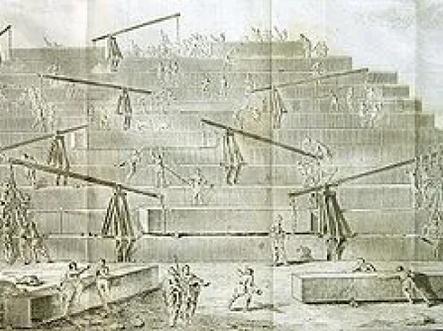
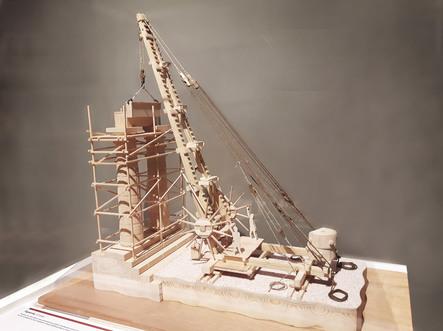
Source: yougoculture.com
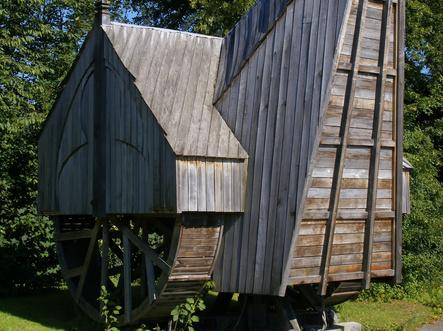
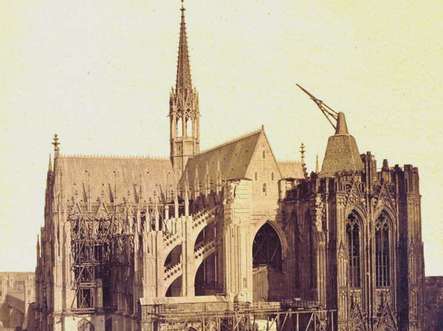
source:File:Schönscheidt, J. H. & Th. - Cologne Cathedral, western facade, south tower with historic crane, 1865.jpg - Wikimedia Commons
The Romans and Greeks were not far behind. They enhanced the technology by “motorizing” the machine using manpower through a treadwheel, decreasing effort while increasing productivity and speed to complete construction. The Parthenon and the Temple of Athena were not only visual marvels, but the advancement of the compound pulley really made construction quick and precise.
The Romans contributed, much like the Greeks, through the articulation of the base, being able to move items not only vertically but also horizontally. The massive undertaking of the aqueducts created the need for massive machines capable of reaching new heights and carrying heavier workloads. With the advent of horizontal movement, multiple uses of the crane were identified and used with great efficiency.
What is a Lift and how did it evolve?
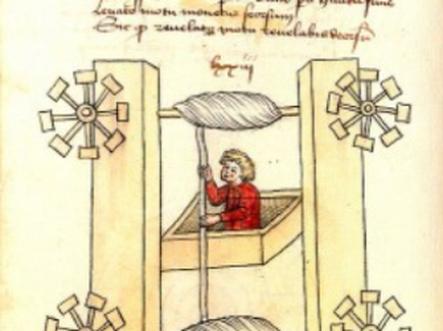
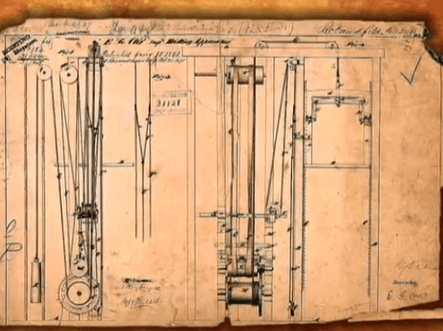
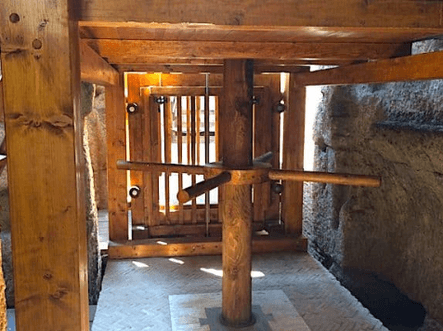
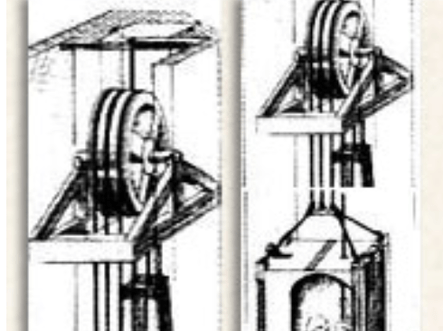
Until the Middle Ages, hoisting materials for the construction of castles and cathedrals via vertical transportation remained much the same. It was in the 17th century that Louis the XV of France took a step towards a passenger-type elevator called “the flying chair” in the Palace of Versailles, where he connected his apartment to that of his mistress.
Stateside, developments were also making their way through the industrial revolution, where machines using cranes and platforms were used for the construction of infrastructure.
The introduction of steam power and hydraulics also played a key role in the development of Boom Lifts. In comes, Elisha Graves Otis, deemed the “Father of the modern skyscraper,” with his creation of the modern elevator. His contribution enabled a building’s vertical rise to seven floors. This was a significant upgrade to real estate because people got away from noisy streets while getting a better view. The modern skyscraper also shined a spotlight on safety like never before.
https://www.youtube.com/watch?v=UtkAJscxbZU
https://www.youtube.com/watch?v=lOjSs_MhIsI
When was the first Boom Lift invented?
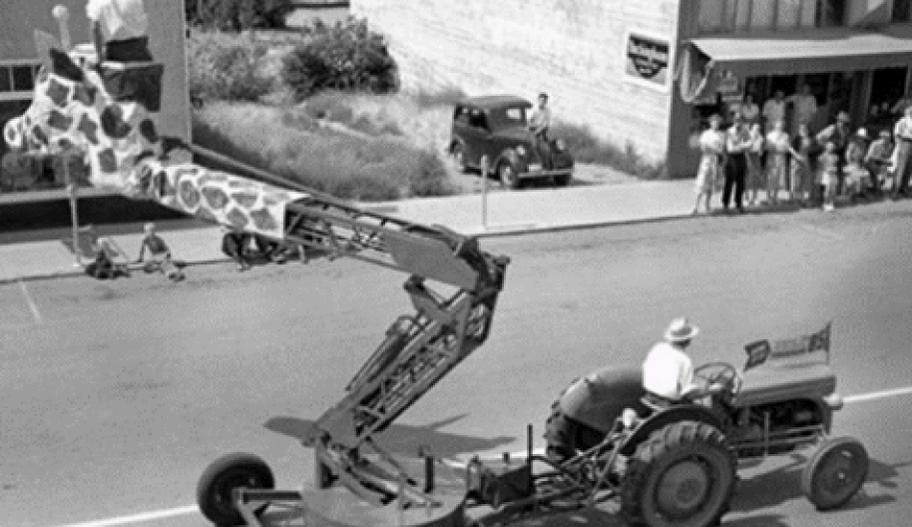
The combination of two elements, the “Boom” or crane and the “Lift” or platform, birthed the Boom Lift. It has been widely claimed that the very first Boom Lift was created by a Canadian named Walter E. Thornton-Trump, an orchard worker. In 1951, he attached a basket to the end of a double-boom hydraulic arm and put it on a wheeled platform. He named this “the Giraffe.” The name “cherry picker” also stuck because it was the original function of the Boom Lift.
https://www.youtube.com/watch?v=evqJhIY6YKc
https://www.forcecorp.com.au/blog/brief-history-boom-lifts/
We discovered, however, that contrary to this self-popularized belief, there were many instances of using the boom lift combination and referencing a “cherry-picker” lift earlier in the 20th century.
Even in the early 1920s, specifically in Europe, the Bureau of Power and Light used these machines for construction and, more importantly, maintenance of public utilities. Some units were mounted to trucks, providing the needed mobility for additional productivity.
How else were Boom Lifts utilized in the past?
In the 1930s, firefighters also needed to address the increasing height of buildings. Aerials known as ladders made a leap in the development of the turntable ladder.
Fire trucks evolved during World War II, using lifts as platforms atop the boom. Also notable in World War II was the utilization of cranes and lift machines by the U.S. Navy Construction Battalion, also known as the Seabees (C.B.).
These trained soldiers fought the “Engineer War” by building staging bases to set the scene for the success of the Allied forces. Quick deployment, assembly, and mobility of machines played a key role in the speed of troops progressing forward. For example, the 1945 Navy campaign in the Philippines used cranes, lifts, and boom lifts in the Pacific, providing much-needed support to efficiently receive supplies. Reconstruction after the war put the CB’s surviving equipment to good use.
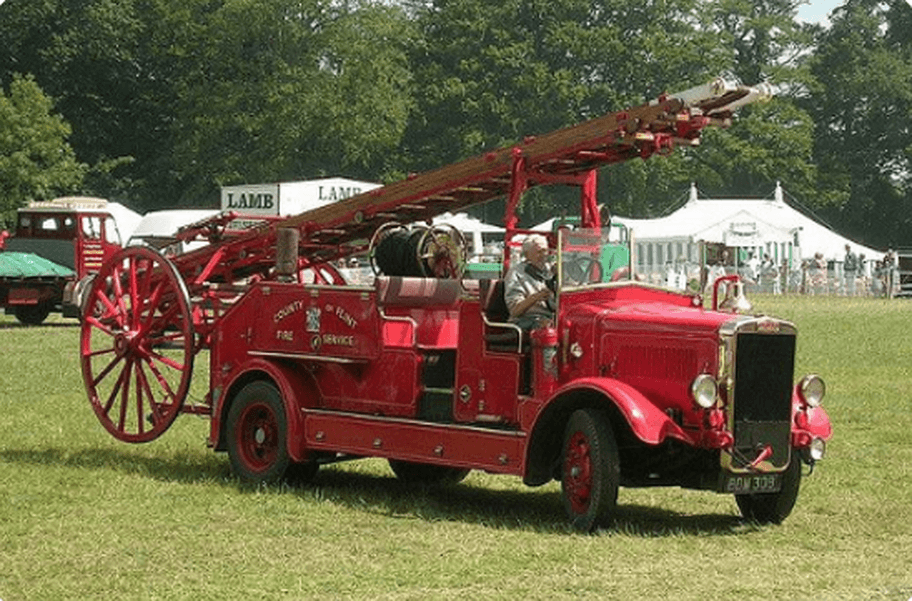
How do Boom Lifts compare in the present time?
In modern times, Boom Lifts are the highest-reaching elevated work platforms. The aerial Boom Lift can move both vertically and horizontally to complete outdoor work for industrial, construction, and maintenance projects.
In 1959 Art Moore founded Snorkel, focusing on safety, service, and value. He was able to solve the needs of firefighters who were his first customers. This gave them the advantage of reaching heights of 85 feet with their hoses. Snorkel can be found worldwide across 50 countries.
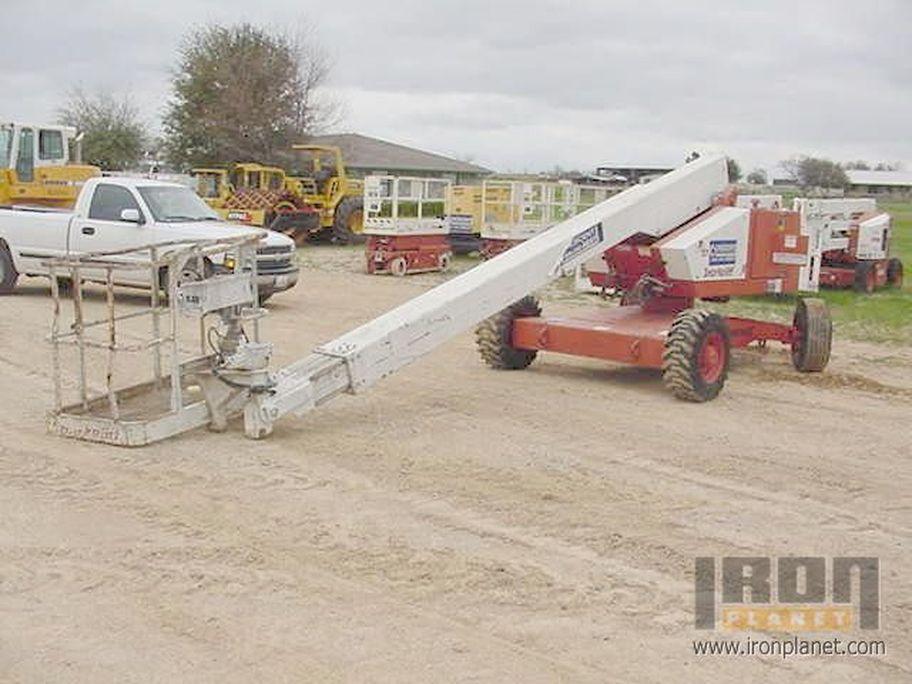
Genie was first founded in 1966 under the Terex family. Its founder, Bud Bushnell, bought the rights to a lift that used compressed air to raise and lower the platform. As his machine worked like magic, the Genie was born.
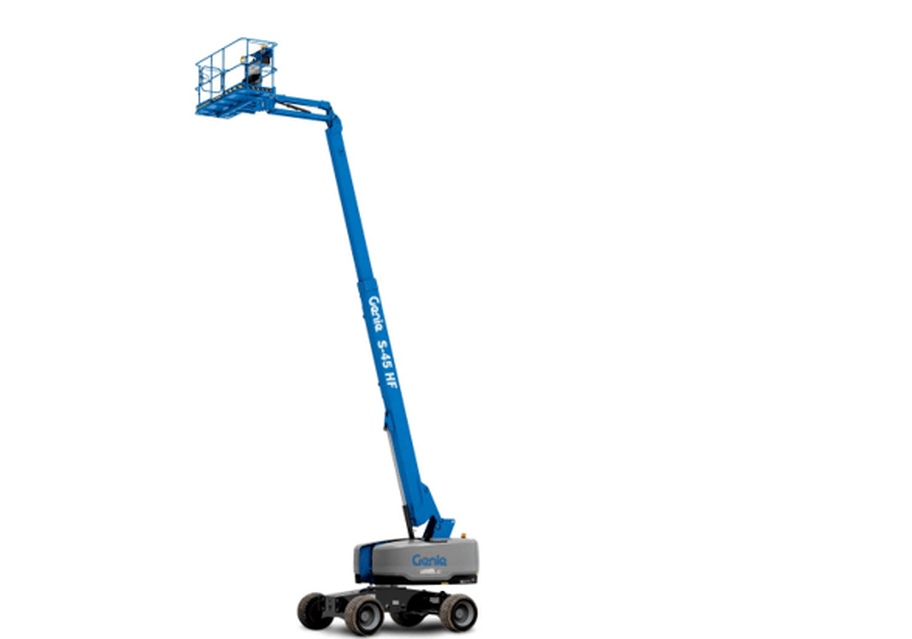
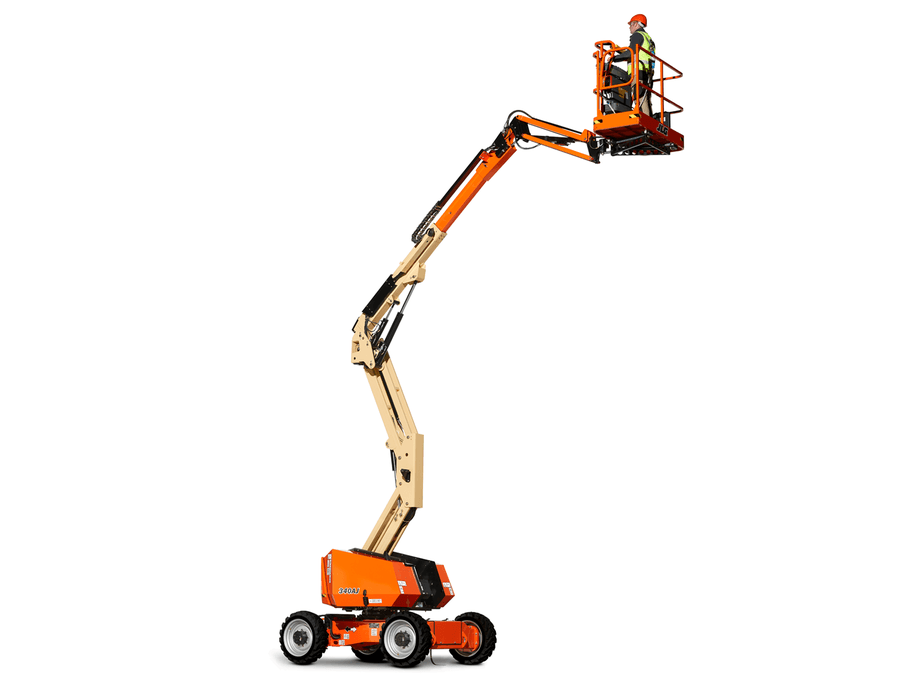
In 1972, Finland’s Jalo & Jalofounded by firefighter Antti Jalo, used Bronto Skylift machines in their sheet metal business. Antti quickly recognized a market for lifting equipment rentals as he used them for the company. As one of Bronto Skylift’s long-term customers, Jalo & Jalo has grown its business to become the leading rental company in the Nordics.
Bronto Skylift machines are Finland-made extreme boom lifts, reaching up to 295 feet in height and 100 feet of side reach with a basket up to 10 feet long that can lift up to 1,540 lbs. Bronto trucks are best known for their 92- to 230-foot fire engines that can be seen in towns and cities across the U.S.
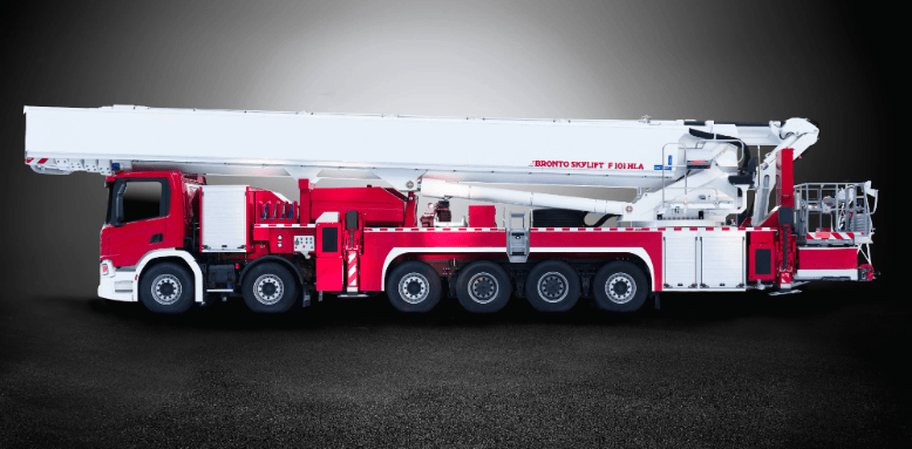
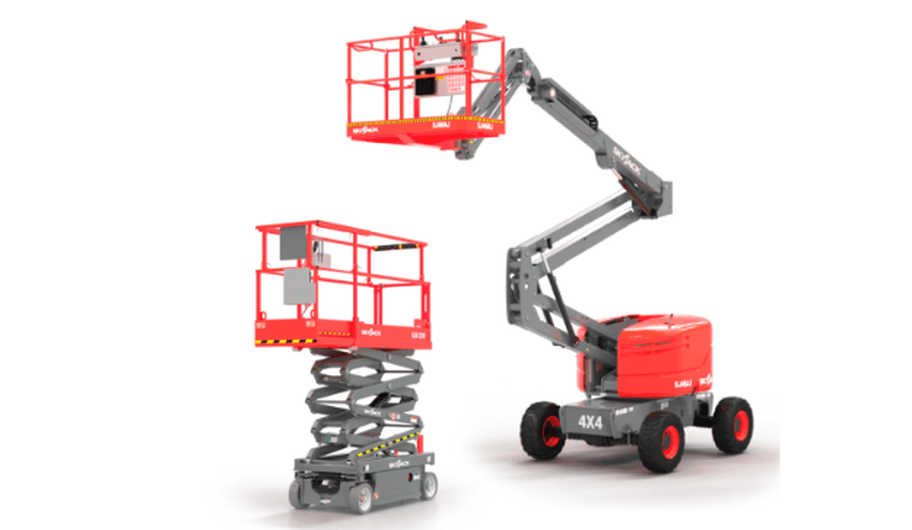
Find out why Alpha Platforms is your best choice for height access solutions
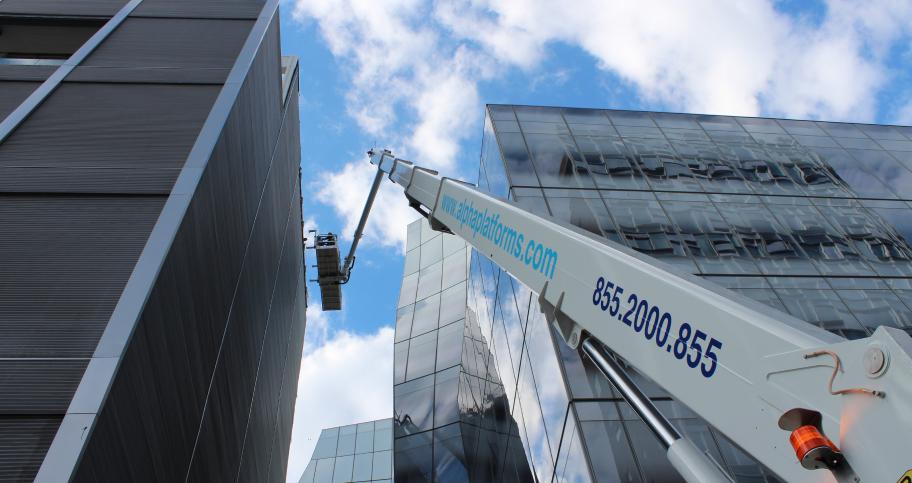
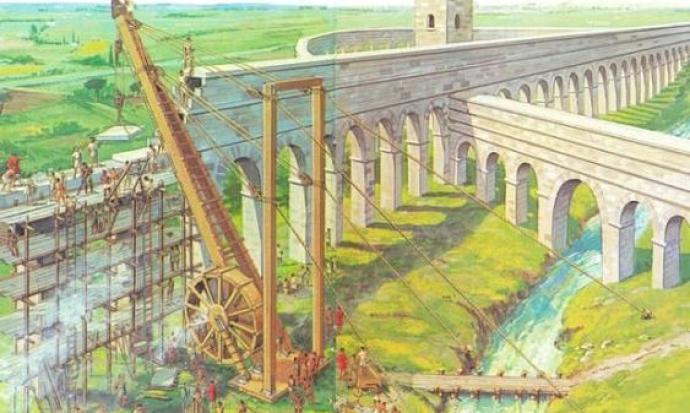
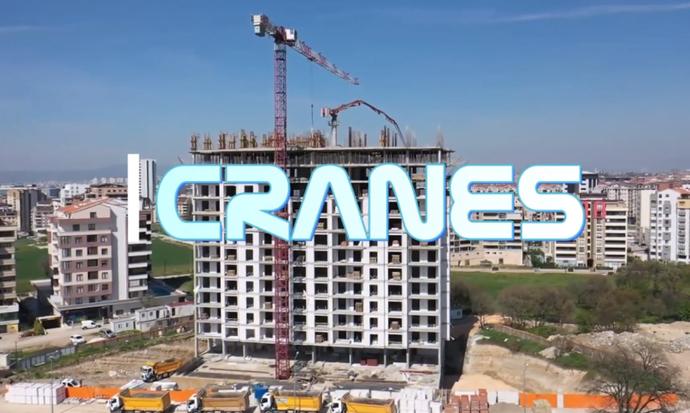


![[source: Just A Car Guy: electric powered street light trucks used by the Bureau of Power and Light.]](/media/article/article-image-291-1678289694300.jpg)






